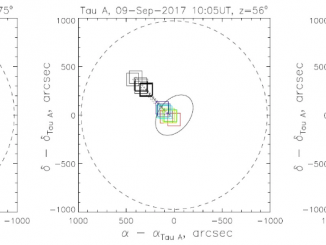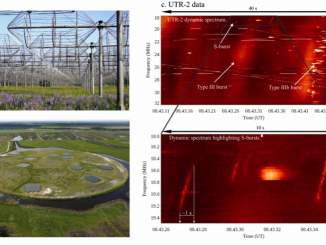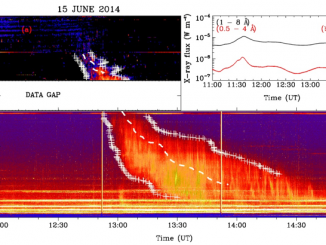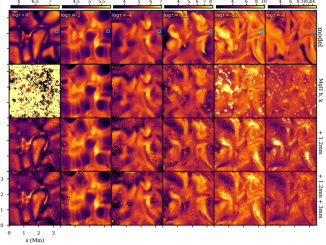The effect of scattering on the apparent positions of solar radio sources observed by LOFAR
by Mykola Gordovskyy
Radio sources observed in the decametric range during type II and type III solar radio bursts are believed to be produced by coherent plasma emission due to electrostatic plasma oscillations induced by propagating suprathermal electrons (e.g. Ginzburg & Zhelezniakov 1958). This type of emission is a valuable tool for observational diagnostics of the upper corona. Produced at the local plasma frequency, $f_{pe}\rm{[kHz]}= 8.93 (n_e\rm{[cm}^{-3}\rm{]})^{-1/2}$ or its harmonic, plasma emission can reveal […]








